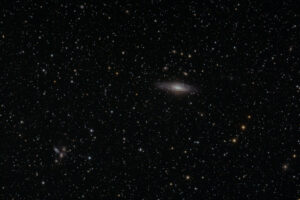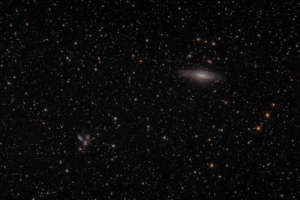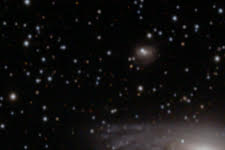I am testing to see if what is said about 9 hours being minimal time for a truly deep sky image. Collecting 9 hours in Syracuse is at least a 3 night proposition but I was able to keep just for minutes shy of 10 hours for this image. There is a definite improvement over the 6.5 hour image in brightness of the galaxies and smoothness in the background. Here is the final image and links to the previous images. The differences are subtle. At a quick glance, I don’t really see much difference in the three pictures. But when I really look at them without high magnification, I would still pick the longest exposure as the best but I wouldn’t be able to explain why. If you expand them to 400% or 500% and look at the large galaxy (NGC 7331) and look again at the quintet, you will see a lot more smoothness and detail as more time is added. Especially look for the tidal spray of stars from the Stephan’s Quintet in the three pictures without zooming. Click the links for full resolution images.
ARP319 for 3 hours and 20 minutes
ARP319 for 6 hours and 24 minutes
ARP319 for 9 hours and 54 minutes
We can see the difference in detail in the tiny spiral galaxy just above right and center of the picture is NGC 7331. In the 3 hour picture this galaxy is very grainy with a lot of high background noise.
Detail of NGC7331 for 3 hours and 20 minutes
In the image with 9 hours and 54 minutes, I purposely stretched the picture a bit more in the 10 hour picture which should make any grainy background noise even worse, but in this highly zoomed cropped picture you can see that NGC 7337 is better formed and clearer yet the background is much cleaner. Even at normal resolution, most of us pick up on these small differences and we will be drawn to the long exposure deep sky picture even when these details are too small for us to recognize consciously.
Detail of NGC7331 for 9 hours and 54 minutes
At any rate, after all this work, I hope this study will convince you one way or the other about whether or not it is worth more time. I can see people choosing either side on this one; a good enough picture can be had in 3-4 hours or going for deep sky pictures is worth all that time.





